| E |
|
|
|
O |
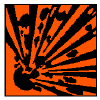 |
Explosive
This symbol with the word
"explosive" denotes a substance which may
explode under the effect of a flame or if subjected to shocks or friction. |
|
Oxidizing
This symbol with the word
"oxidising " denotes a substance which releases a lot of heat while it reacts
with other substances, particularly flammable substances. |
 |
| F |
|
|
|
F+ |
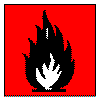 |
Highly flammable
This symbol with the words
"highly flammable " denotes a substance which:
- may become hot and finally catch fire
in contact with air at ambient temperature;
- is a solid and may readily catch fire
after brief contact with the source of ignition and which continues to bum or to be
consumed after removal of the source of ignition;
- is a gas and bums in air at normal
pressure;
- in contact with water or damp air
releases highly flammable gases in dangerous quantities;
- is a liquid that would catch fire with
slight warning and exposure to. a flame.
|
|
Extremely flammable
This symbol with the words
"extremely flammable " denotes a liquid that would boil at body temperature and
would catch fire if exposed to a flame. |
 |
| T |
|
|
|
T+ |
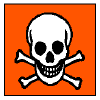 |
Toxic
This symbol with the word " toxic
" denotes a highly hazardous substance. The decision to use the word " toxic
" is based on LD 50 values (substance that kills up to 50 per cent of a sample of
laboratory test animals within a specified period). Therefore, extreme caution is
necessary in the use of these agrochernicals and instructions on the label must be
strictly followed. |
|
Very toxic
This symbol with the words "very
toxic " is used to label a substance which, if it is inhaled or ingested or if it
penetrates the skin, may involve extremely serious, acute (immediate) or chronic
(longer-term) health risks and even death. |
 |
| Xn |
|
|
|
Xi |
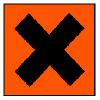 |
Harmful
This symbol with the word
"harmful" should appear on the label of a substance which, if it is inhaled or
ingested or if it penetrates the skin, may involve limited health risks. |
|
Irritant
The same symbol as for
"harmful" but with the word " irritant " is meant for a
non-corrosive substance which, through immediate, prolonged or repeated contact with the
skin or mucous membrane, can cause inflammation. |
 |
| C |
|
|
|
N |
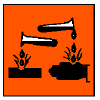 |
Corrosive
This symbol with the word corrosive
" will be found on the label of a substance which may destroy living tissues on
contact with them. Severe bums on the skin and flesh might result from splashes of such
substances on the body. |
|
Dangerous for environment |
 |







